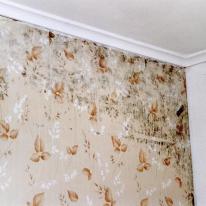Wall linings generally – mould/mildew growth
Listed under:
Interior,
wallpaper,
plaster and fibrous plaster,
plasterboard,
gas,
heating,
mechanical ventilation,
health and safety,
linings,
walls,
moisture,
condensation,
mould,
mould health and safety
Cause
Condensation forming regularly because the wall is not insulated, the house is not sufficiently heated and/or internal moisture levels are too high
Repair
- if paint-finished, wash the wall to remove mould/mildew; treat with fungicide before repainting
- if wallpaper-finished, remove the wallpaper; treat wall with fungicide before re-papering
- if possible insulate the wall; alternatively investigate and address possible causes of high internal moisture levels such as:
- no mechanical extract ventilation in kitchen/bathroom/laundry - moisture migrates to the coldest region of the house
- use of unflued gas heating raising internal moisture levels
- regularly drying clothes on racks indoors
- electric clothes dryer not vented to the outside
- heating not or seldom used in the room
- where plasterboard is wet, there may be a black mould growth on the back of the sheet. This may be Stachybotrys, a toxic mould. If black mould is found, stop work immediately. Wearing gloves and a mask, take a sample of the mould by pressing a 50 mm length of wide self-adhesive packing tape gently onto the mould. Remove the tape and place onto non-stick baking paper. Fold the paper around the tape and place in a plastic bag and send to a testing laboratory. Cover up holes made in the plasterboard for the investigation or repair work. Stachybotrys mould may be found on any material containing cellulose (wood) fibres, including timber and paper-faced plasterboard.




